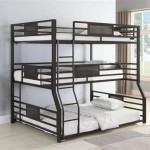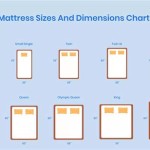Essential Considerations for Queen Size Bunk Bed Plans
Building a queen size bunk bed can be an exciting and rewarding project. By carefully planning and following these essential aspects, you can create a safe, sturdy, and stylish bed that will provide years of enjoyment.
1. Safety First
Safety should be your top priority when designing and building a bunk bed. Ensure the bed meets all applicable safety standards and regulations. Consider the following safety features:
- Guardrails: High guardrails on all sides of the upper bunk prevent falls.
- Rounded corners: Eliminate any sharp edges that could cause injuries.
- Sturdy construction: Use solid wood or metal for the bed frame and slats to ensure durability.
- Appropriate mattress thickness: Select mattresses that fit snugly within the bunk frame, reducing the risk of entrapment.
2. Material Selection
The choice of materials affects the strength, durability, and aesthetics of your bunk bed. Consider these options:
- Solid wood: Strong, durable, and aesthetically pleasing, but requires more maintenance.
- Plywood: A less expensive alternative to solid wood, but still provides good strength and stability.
- Metal: Durable, easy to assemble, and can be painted to match any decor.
3. Dimensions and Layout
Plan the dimensions of the bed carefully, considering the size of the room and the available space. Determine the height of the upper bunk, the clearance between the bunks, and the overall length and width of the bed.
Consider the layout of the bed, whether it will be placed against a wall or in the center of the room. Plan for access to the upper bunk and ensure adequate headroom for the occupant.
4. Staircase or Ladder
If the upper bunk is significantly elevated, you will need to provide a means of access. Options include:
- Staircase: Provides a more comfortable and safe ascent, especially for younger children.
- Ladder: A more space-efficient option, but requires more agility to climb.
5. Storage Solutions
Maximize space and functionality by incorporating storage solutions into your bunk bed design. Consider built-in drawers, shelves, or cubbies to store bedding, books, or toys.
6. Customization and Style
Add personal touches to your bunk bed by customizing its design. Paint it to match the room decor, add decals or wall art, or incorporate fabric curtains for privacy.
7. Assembly and Maintenance
Follow the manufacturer's instructions carefully when assembling the bunk bed. Ensure all parts are securely tightened and that the bed is stable before use.
Regularly inspect the bed for any loose parts, damage, or signs of wear. Tighten bolts or screws as needed and replace any worn components promptly to ensure ongoing safety.
By carefully considering these essential aspects, you can design and build a queen size bunk bed that is safe, sturdy, and perfectly suited to your needs.
Free Diy Furniture Plans How To Build A Queen Sized Low Loft Bunk Bed The Design Confidential

Multifunctional Queen Size Bunk Bed With Storage Area Plan New Zealand

17 Easy Steps For A Diy Built In Bunk Bed Start At Home Decor

How To Build An Easy Diy Queen Size Loft Bed For S Thediyplan

Queen Loft Bed Plans Palmetto Bunk

How To Build A Diy Queen Size Loft Bed With Desk Thediyplan

Diy Queen Loft Bed Frame Plans Rannels Rustic Log Build A Beds Murphy

Pin On Beau Bed

Queen Builtin Bunks Reveal Honey Built Home

How To Build A Built In Bunk Bed Plank And Pillow
Related Posts







